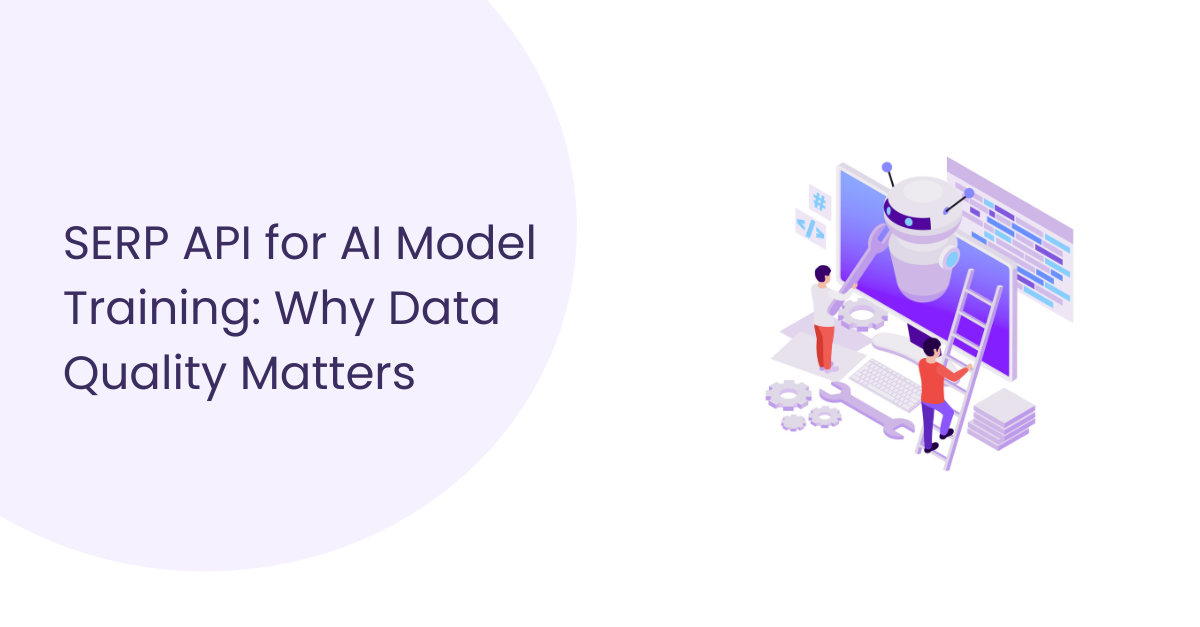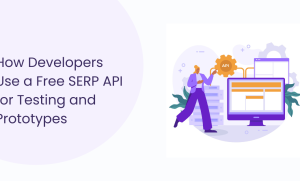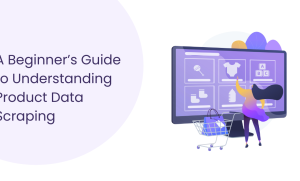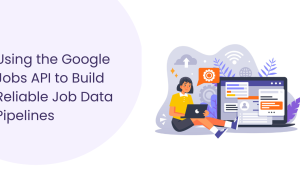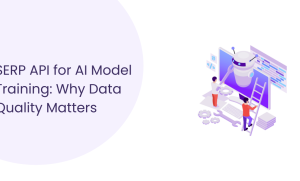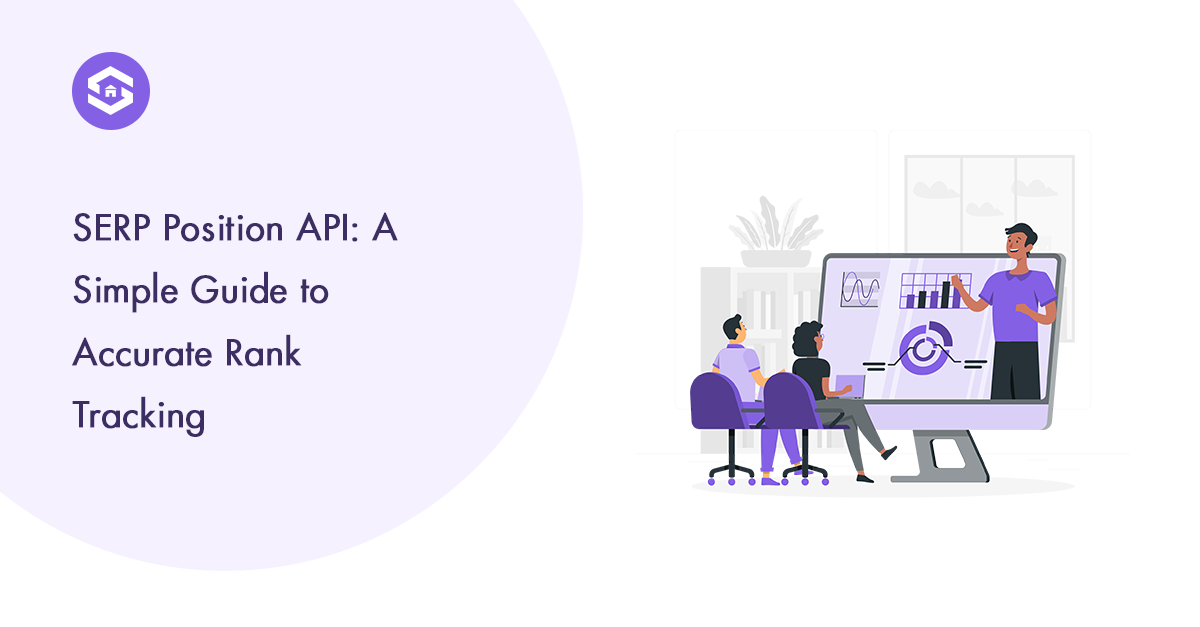Table of Contents
Table of Contents
Imagine asking an AI a tough question and getting an answer that really hits the mark. It feels like the AI knows what’s trending, what people really want to find online, and how search engines are presenting information right now, all thanks to insights powered by a SERP API for AI Model Training.
That’s thanks to SERP APIs. They collect fresh, structured data from search engines such as top links, snippets, FAQs, and even ads. This real-time data helps AI models understand not just the content online but how it’s organized and what users are engaging with.
Search engines are always evolving; one week it’s new snippets, the next it’s a change in how results appear. Trends shift fast, and what’s relevant today might be outdated in a month. That’s why AI models trained on live SERP API data perform better they learn from current results, not stale information.
Consider a virtual shopping assistant. If it’s trained on live search data, it learns exactly how local deals or trending products appear in search results. This helps it suggest relevant offers that users actually want, making the experience feel seamless and personal.
Another big plus? SERP APIs deliver clean, focused information directly from search engines. Unlike scraping random web pages, this data is precise and layered with useful context. It’s great for training AI to spot what matters and how to respond in a way that feels natural.
How Data Quality Shapes AI Accuracy
AI models are only as good as the data you feed them. If the information coming from your SERP API is messy, incomplete, or one-sided, the model’s accuracy takes a direct hit. Simply put, bad data means bad predictions.
When the quality drops, a few things start to go wrong:
- Wrong Predictions: Models trained on poor data start guessing instead of understanding. That leads to results that confuse users or send teams in the wrong direction.
- Hidden Bias: If most of your data leans toward one type of result or viewpoint, the AI will learn that bias and treat it like fact. That’s how fairness and trust break down.
- Missed Insights: Incomplete or inconsistent data hides the small signals that matter. Your AI won’t “see” patterns that could make a real difference.
- Outdated Context: If your data’s old, your AI becomes outdated too. It might keep pushing insights that worked a year ago but are useless today.
- Longer Training Time: Dirty data wastes resources. You’ll spend more time cleaning and retraining, but the accuracy won’t really improve.
Good data isn’t just a nice-to-have; it’s the core of a trustworthy AI system. Teams need to keep their data clean, current, and balanced. Without that, you fall into the “garbage in, garbage out” trap, and no algorithm can fix that.
Feeding your AI with fresh and relevant SERP data helps it mirror what’s really happening online. That’s what keeps predictions sharp, fair, and actually useful, the way intelligent systems are supposed to be.
Filtering Out Irrelevant or Misleading Results
When you’re pulling data through a SERP API, more results don’t automatically mean better results. What really matters is how clean and accurate that data is. You’ve got to make sure the results actually make sense for your project not just a pile of ads, outdated pages, or weak sources that end up skewing your insights or confusing your AI.
Start by excluding paid advertisements. Ads may grab top spots but prioritize budgets over relevance. Removing these helps your datasets focus on organic content that better reflects user intent.
Next, watch out for outdated or stale pages. Many APIs offer date filters—use them to keep your data fresh and aligned with current information trends. This matters because AI models trained on old data often fail to predict today’s behaviors accurately.
Filtering for site authority is another key step. Low-authority or spammy sites introduce bias and lower overall data quality. Enabling filters based on domain reputation directs your data stream towards credible sources.
Depending on what you’re building, you can choose which parts of Google’s results matter most, maybe it’s featured snippets, maybe it’s local packs. Narrowing your focus like that keeps your dataset clean and actually useful.
It’s also smart to turn on safe search or content filters so you don’t end up with adult or irrelevant material slipping in. That one step alone helps keep your data professional.
When you filter your results this way, your AI models don’t just work faster, they work smarter. You get cleaner inputs, fewer mistakes, and insights that actually mean something.
Temporal Changes in SERPs and Model Adaptability
Search results don’t stay the same. They shift daily, reflecting new trends, breaking news, and evolving user interests. This constant flux makes it vital for AI models trained on search engine data to keep pace through regular updates. Without fresh data, models risk becoming outdated, less accurate, and less useful.
Using a SERP API for AI Model training means you can tap into real-time search landscapes. But it’s not just about grabbing a snapshot once AI needs continuous access to updated SERP data because:
- Search engines introduce new features and change rankings frequently.
- User intent evolves, shifting what type of content ranks highest.
- AI models train better when they see current, relevant examples.
- Algorithms adjust based on recent data, not stale patterns or old trends.
Think about it, if an AI model is still learning from last year’s search results, it’s already behind. It won’t catch new trends, fresh snippet formats, or the latest changes in local search layouts. That gap shows up fast in how it predicts and recommends.
The fix is simple: keep feeding it current SERP data through the API. That regular refresh keeps the model sharp and aware of what’s happening now, not what mattered months ago. Search changes daily; your AI should learn just as often.
Spotting Bias in Search Results with SERP APIs
Ever noticed how the same websites seem to show up at the top of Google search? That’s not always by chance and it matters for anyone using SERP API for AI Model Training.
Search engines organize results, highlight snippets, and pick knowledge panels based on complex rules. Sometimes, these patterns show subtle bias. For example, the same voices or viewpoints might dominate the first page, while other opinions or sources get overlooked.
Why does this affect AI training?
- AI learns from the data it’s fed. If your dataset mostly includes top-ranked sites, your model might ignore smaller, unique perspectives.
- Snippets and knowledge panels often present one version of an answer, making it easy to miss alternative ideas.
- Old and repetitive results can reinforce existing trends, rather than introduce diversity.
How can you catch and fix bias in your training data?
Start by analyzing which domains and authors appear most for your target keywords. Dig deeper into snippet styles, knowledge panel choices, and even long-tail and LSI keywords; these highlight overlooked questions and topics. Mix things up by adding sources from different locations, industries, and backgrounds. The goal is to build fairness into your AI so it’s informed by a wide variety of voices.
Top Results vs. Long-Tail Results
When using a SERP API for AI Model Training, the decision of which search results to include can shape how well the model understands both common topics and niche questions.
When people search online, the top-ranked pages are usually what they see first. These pages tend to cover general topics the kind that get the most clicks and represent the most common opinions. Training an AI mostly on this type of data helps it respond quickly and confidently to popular questions.
Here’s the thing: if your model only studies what’s on the first page, it’s basically learning the surface-level story. All the depth sits lower down, in those long-tail results: niche blogs, step-by-step tutorials, and quiet corners of the internet where real, specific questions get answered.
Pulling that data into your training mix gives the AI more to work with. It starts picking up on oddball topics, rare search patterns, and voices that don’t always hit the front page. That’s what makes it stronger: it learns how people actually think and ask, not just what’s trending.
In short:
- Top results teach your AI the mainstream, high-traffic side of the web.
- Long-tail results fill in the details that make it genuinely useful for edge cases.
- Mixing both builds a balance; the model stays accurate on trending topics while still handling specialized questions.
Conclusion
When you train your AI with data from both top-ranked pages and long-tail results, it starts to “think” more like real users. The top results teach it to handle the big, everyday topics that everyone searches for. But those deeper, less popular results are the ones most people never scroll to bring in variety. They help the model understand rare questions and specific use cases that typical training data usually misses.
It’s also not enough to do this once and forget about it. Search behavior changes all the time. By regularly updating your datasets with new SERP data, you keep your AI tuned to what’s happening right now instead of what was true months ago. APIs make this easier because you can fetch fresh results on demand, keeping your model relevant without starting from scratch.
In simple terms, mixing both broad and niche data helps your AI stay balanced smart with trends but also sharp on the little details. Over time, that makes it more reliable, more accurate, and honestly, a lot more human in how it responds.

